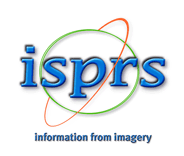General Plan of Activities
Symposiums/Workshops
- 2023: The 12th International Conference on Mobile Mapping Technology (MMT 2023), Padova, Italy;
- 2023: ISPRS Geospatial Week 2023, Cairo, Egypt;
- 2023: International Conference on Earth Observation for Environmental Changes (EOEC 2023), Trondheim,Norway;
- 2024: TC I Mid-term Symposium, Beijing, China;
- 2025: The 13th International Conference on Mobile Mapping Technology (MMT 2025), TBD;
- 2025: ISPRS Geospatial Week 2025, Dubai, UAE;
- 2025: International Conference on Earth Observation for Environmental Changes (EOEC 2025), Vancouver, Canada;
- 2026: ISPRS 2026 Toronto Congress, Toronto, Canada
Publications
- 2023-2024: A Special Issue on LiDAR related topics, to be published in ISPRS journals or JAG in 2024
- 2023-2024: A Special Issue on EOEC 2023, to be published in ISPRS journals or JAG in 2024
- 2024-2026: A LiDAR-related Book, to be published in by Elsevier in 2025
- 2025-2026: A Special Issue on EOEC 2025, to be published in ISPRS journals or JAG in 2026
Benchmarks and Datasets
- ISPRS Benchmark on Building elevation elements aims to address this issue by providing a public benchmark dataset and an evaluation framework for performance comparison of building elevation segmentation methods. The dataset will cover 6 different urban areas, 8 building elevation elements categories, and more than 600 million points within 1000 kilometres. A detailed description and benchmark of this dataset will be submitted in the 2023 ISPRS Journal of Photogrammetry and Remote Sensing.
- Indoor dataset. GMMAP: Gnss-denied Environments Multisensorial Mapping and Positioning datasets was collected by a stroller-mounted MLS system featuring one Livox Horizon laser scanner in an underground parking lot with GNSS-denied environment. The point clouds were processed with the LIO-Livox SLAM algorithm provided by Livox, which contains approximately 170 million points covering 8000 m2 area, and RGB data was also collected with a 360-degree camera. The dataset is manually labelled into six categories, including ground, ceiling, column, vehicle, wall, and unclassified.
- The OpenGF dataset aims to address this issue by providing a public benchmark dataset and an evaluation framework for performance comparison of ground filtering methods. The dataset not only covers approximately 47.7 km2 with over 542 million points from 4 countries but also contains 9 different terrain scenes. The definitions of the three classes in the dataset are as follows:
- Unclassified (class 0): Low outliers, high outliers.
- Non-Ground (class 1): Buildings, low vegetation, medium vegetation, high vegetation, bridges, cars, and other unclassified objects.
- Ground (class 2): Bare earth, clean water surfaces.
WG I/4






